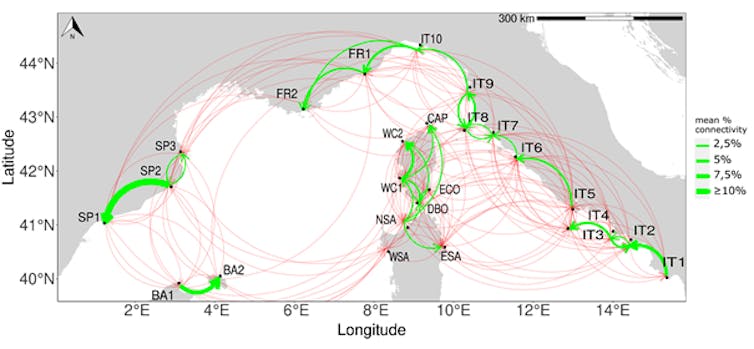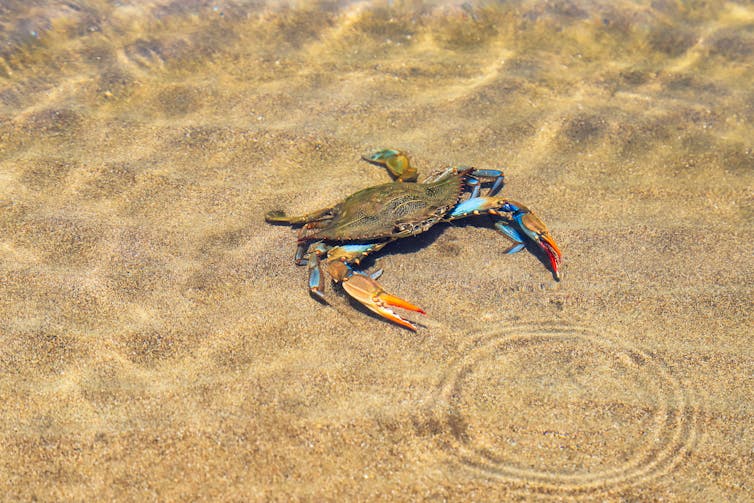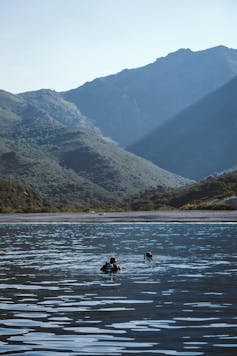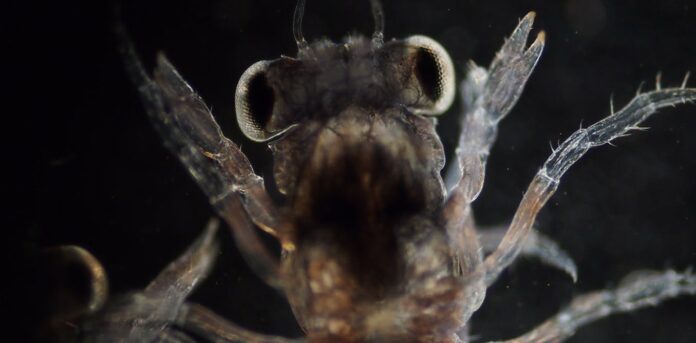Mediterranean currents disperse the larvae of many marine species, making cross-border management essential to protect ecosystems and guarantee sustainable fisheries resources.
The Mediterranean is extremely rich in marine biodiversity, but species there experience contrasting fates, from the blue crab from America considered invasive to the edible sea urchin threatened by overfishing.
To sustainably manage the populations of these marine species, we must look at their larvae. These, transported over vast distances by currents, connect populations of the same species separated by hundreds, even thousands of kilometers. Added to this natural phenomenon are overfishing and climate change, which are putting increasing pressure on Mediterranean ecosystems.
These phenomena of large geographic scale imply that the sustainable management of fisheries and marine population stocks cannot be conceived locally. It must now integrate the regional, even international, dynamics of marine animal larvae.
From traveling larvae to more sedentary fish and crustaceans
Many marine species have a so-called “biphasic” life cycle, with first larval phase where the larvae are transported by ocean currents before settling in suitable coastal habitats, such as spawning grounds (breeding areas) or nurseries (juvenile growth areas).
After this dispersion phase, the second phase corresponds into adulthood, where populations generally become more sedentary.
Thus, the ability of larvae to find a favorable habitat is crucial for the survival of species in the long term, that is to say over several generations (a generation lives from a few years to around ten years, this is very variable depending on the species). Any disturbance of these habitats, whether through the degradation of coastal ecosystems, urbanization, or even climate change, can have serious consequences on marine biodiversity and the stability of ecosystems.
Our research on larval movements shows that ocean currents, combined with the dispersal abilities of larvae, play a key role in their survival and establishment in suitable habitats. Protecting these strategic areas not only preserves marine populations, but also supports human communities that depend on these resources for fishing and tourism.
Marie-Noelle Casamajor, Ifremer, CC BY
The edible sea urchin: towards cross-border management
The edible sea urchin (Paracentrotus lividus) is a particularly prized species, both by professional and artisanal fishermen. In Corsica, faced with overfishing, stricter regulations have been put in place, notably in 2023. For example, new rules regarding the fishing period and quotas have been introduced.
However, the survival of this species depends not only on local management efforts, but also on larval exchanges between different regions. Indeed, our work shows that there is a strong connectivity between sea urchin populations in Corsica and Sardinia. This means that the larvae circulate from one region to another, thus highlighting the importance of cross-border management, which takes into account the interactions between the different geographical areas of the north-west Mediterranean basin.
Although simulations can provide valuable predictions, they complement field observations, not replace them. Their combination allows cross-approaches, with the practical challenge of creating management tools and more precise visualizations.

Barrier et al., 2024, _Journal of Sea Research_, Author provided (no reuse)
The blue crab: an expanding invader
The blue crab (Callinectes sapidus), native to the American Atlantic coasts, represents a growing threat to Mediterranean ecosystems. This invasive crustacean, now present in many lagoons, disrupts ecosystems by threatening local species such as green crabs and eels. Opportunistic and competitive, it reproduces quickly and consumes environmental resources. However, in some countries, such as Italy or Croatia, the blue crab has been integrated into fishing practices, becoming a new source of income.

rospoint, Shutterstock
By modeling larval dispersal over a 10-year period, our ongoing research shows that blue crab larvae follow regular routes connecting Tunisia, Sicily, Corsica and the Ligurian Sea. Certain trajectories show little variation over the period studied, which indicates a recurring phenomenon. The recurrence of connectivity could thus become a relevant metric to consider in management measures. In addition, certain areas, such as the Gulf of Lion, play the role of larval reservoirs, contributing not only to the maintenance of local populations, but also to the colonization of new areas.
The great sea spider: a species in decline

Odysseus Aldrovandus, CC BY
The great spider crab (Maja squinado) is another emblematic crustacean of the Mediterranean. However, it has disappeared from certain regions, notably the Balearic Islands. In Corsica, the populations are still present, but they decline every year.
In fact, my simulations show low connectivity between the fishing zones of the Balearic Islands and those of the Spanish coasts, which complicates repopulation in these regions. On the other hand, the connection between Corsica and Sardinia remains strong, partly thanks to sea currents which allow regular exchanges of larvae.
These results highlight the importance of ocean currents in connectivity between habitats and highlight the need to protect breeding areas to avoid further degradation of populations.
Biophysical modeling: a tool for the management of fishery resources
Biophysical modeling, which combines hydrodynamic and biological models, is a powerful tool for understanding larval dispersal dynamics. Using the Ichthyop software, developed by the MARBEC laboratoryI have could simulate the journeys of larvae of several species, taking into account various parameters such as temperature, salinity and larval lifespan.

Cyril FRESILLON/Stella Mare/CNRS Images, Provided by the author
In certain cases, notably for the common sea bream, a fish capable of swimming during its larval phase, I had to adapt the tool to simulate its ability to resist sea currents. This makes it possible to obtain more realistic results, better reflecting field observations.
These simulations, carried out over periods of 10 to 12 years, make it possible to identify interannual trends and evaluate seasonal variations in the dispersal of larvae. They are based on physical models, mathematical formalisms (codes) which model the marine environment from data on marine currents (horizontal and vertical speeds), surface and depth temperature, salinity, etc. Thanks to these data over a period of 10 years, it becomes possible to observe the effects of climatic variations on these global parameters. These simulations provide fisheries managers with valuable tools to understand the connectivity between breeding and nursery areas, while highlighting the importance of cross-border management to ensure the viability of marine populations in the Mediterranean.
By anticipating the impacts of climate change and biological invasions, these predictive models provide new perspectives for the sustainable management of marine resources. They not only allow us to better understand the dispersal of larvae, but also to anticipate the effects of environmental changes, such as global warming. However, it is important to remember that, although these simulations complement field observations, real measurements remain essential to understand large-scale marine dynamics.

This article is published as part of the Science Festival (which takes place from October 4 to 14, 2024), and of which The Conversation France is a partner. This new edition focuses on the theme “ocean of knowledge”. Find all the events in your region on the site Fetedelascience.fr.

